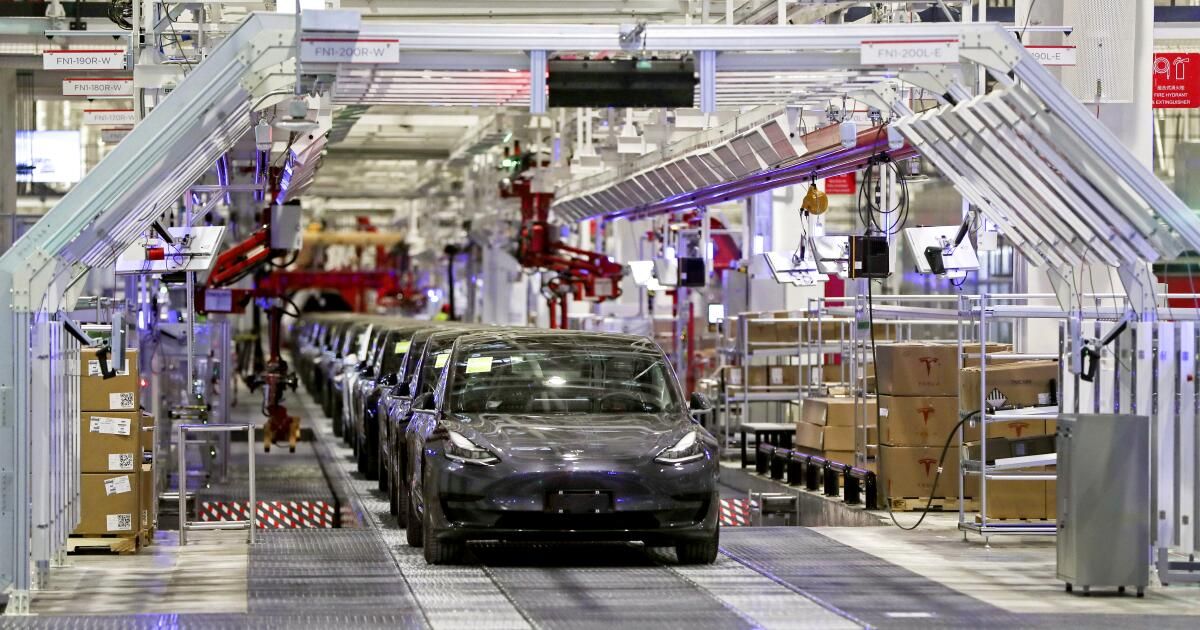As a mature and cost-effective technology, electric vehicles are a key part of the solution to planet-warming emissions. When combined with clean electricity, they offer a route to climate-neutral land transportation. And fortunately, electricity is getting cleaner every year, due to the rapidly falling costs of solar and wind energy.
Global sales of electric vehicles increased last year, reaching 13% of all new vehicles sold, up from 8.6% in 2021. Much of this growth came from China, where sales doubled in 2022, to 6 .9 million (26% of all new car sales). ), and showed no signs of stopping. China Association. of Automobile Manufacturers predicts that the country's sales will grow more than 30% in 2023, reaching 9 million (33% of total new vehicle sales).
But even this growth rate will not be enough to maintain China's or the world's climate commitments. China's motor vehicle carbon emissions alone are greater than the carbon emissions of California's economy as a whole. To align transportation emissions with scientific goals for a safe climate, China's leaders will need to accelerate the shift to electricity.
According to the International Council on Clean Transportation, a key element of China's success so far is its new energy vehicle sales standard, a little-known policy that sets sales targets for domestic automakers. These targets will be intensified, allowing for flexible compliance through carbon credit trading. If a manufacturer sells more than the industry average target, they receive credits that can be sold to a manufacturer that sells less. Since the policy came into effect in 2019, the benchmark has risen from 10% of all sales that year to 18% in 2023. But with sales already far exceeding that threshold last year, the Ministry of Industry and China's IT can (and should) set its sights much higher.
Specifically, Chinese transportation officials should plan a standard for new energy vehicles that reaches 75% of all sales by 2030. When combined with other ambitious and feasible measures for heavy commercial vehicles, this would reduce automobile emissions by 70% below 2020 levels by 2050. In contrast, vehicle emissions are forecast to increase 63% by mid-century if no additional measures are taken.
The Chinese authorities have no good reason to hold back. After all, putting more clean cars on the roads would also save tens of thousands of lives annually by reducing air pollution. Ambitious standards for new energy vehicles are also essential to align China's transportation sector with its broader commitment to net-zero emissions.
International Energy Agency modeling shows that global adoption of electric vehicles must exceed 60% of all cars by 2030 to achieve net-zero emissions globally by 2050. In practice, this means that the most large and advanced countries must surpass the world average, because many other countries will not have the means to achieve such a rapid transition. Therefore, a Chinese decision to raise its new energy vehicle standard to 75% by 2030 would have major consequences.
A faster transition is feasible and affordable. Many electric vehicles are already available in major markets and new ones are constantly being added to manufacturers' product lines. The growing investment shows that automakers are serious about accelerating the shift to electric vehicles. Prices will continue to fall with improvements in battery technology and economies of scale. Electric vehicles in China are already cheaper than internal combustion cars over the life of the vehicle (after taking into account the fuel and maintenance savings that electric vehicles offer). These developments have pushed electric vehicle sales past a tipping point in China and 18 other countries, including the United States. Major markets have entered a phase of mass adoption where preferences will change surprisingly quickly.
Still, it would be a mistake to leave things in the hands of the invisible hand of the market. Without policy changes, the transition will be slower than we need, given the lifespan of a typical car and the decades of investment that have gone into fossil fuel infrastructure. While around 25 million new passenger cars are sold annually in China, more than 200 million vehicles are already on the road and most will continue to be driven for years to come.
To overcome this inertia, ambitious new energy vehicle sales standards must be integrated into a broader set of strategic policies. For example, expanding mass adoption will require measures to stimulate and coordinate investment in charging infrastructure. And to realize the full climate and public health benefits of electric vehicles, increased deployment must be accompanied by an accelerated transition to clean electricity.
The remarkable growth in sales in recent years is promising for the global fight against climate change. But transportation officials must continue to act quickly to adapt policies to global needs. While too little ambition risks causing unsustainable climate damage, a rapid transition is essential to achieve a safe climate and cleaner air. There is no time for delays. China's leaders must put the pedal to the metal.
Chris Busch is director of transportation and senior economist at Energy Innovationan energy and climate policy research firm in San Francisco.









